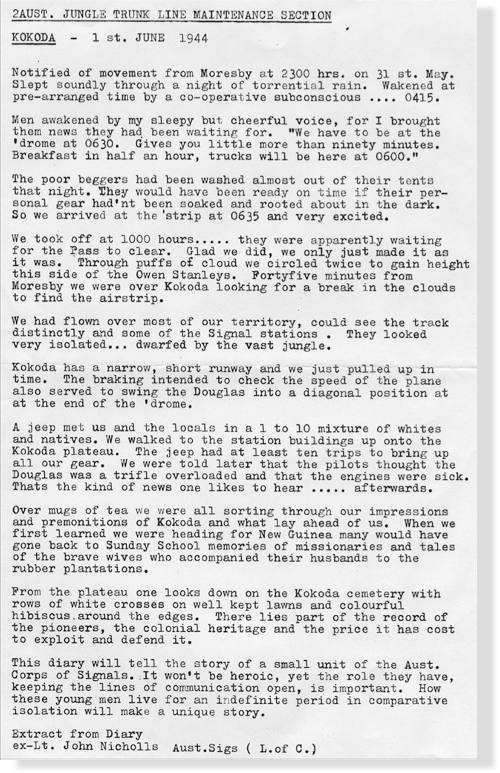

HOME
The hand-written diary contains a wealth of detail about army life behind the front; from awaiting the mail plane to the dangers of hunting bush dog with souvenir rifles. John typed up this extract shortly after he returned from New Guinea, for an article in the Army’s
Signals Corps newsletter.
After the war John worked at Vida Turner’s Textiles studio where his wife, Phyllis, had been a designer. After the birth of their second child, in 1947, the family of four moved to a rural community in northern Victoria. They lived in a disused school house, without power or running water; this was twenty years before the popularity of ‘New Age’ and alternative lifestyles.
John took on farmhand work, grew veggies, ran chooks (hens) and a cow.
For a short time he took a studio in the nearest town and taught painting. Phyllis gave birth to two more children and, not surprisingly, she painted less as the demands of raising a family in such spartan conditions took precedence.
In 1957 they moved to a larger rural township where John got work as a sign-writer, then as an art teacher at the local technical school.
In 1967 he completed a teacher training degree and the family emerged from financial hardship into relative security.
After retirement, John & Phyllis moved to the Grampians region where they both found time to paint a little.
Phyllis died in 2000.
John does not regard himself as an artist, he says he didn’t have the necessary dedication.
These New Guinea sketches have been exhibited several times in small galleries, including the Australian Army Signals Corps Museum in Blackburn, Victoria.






